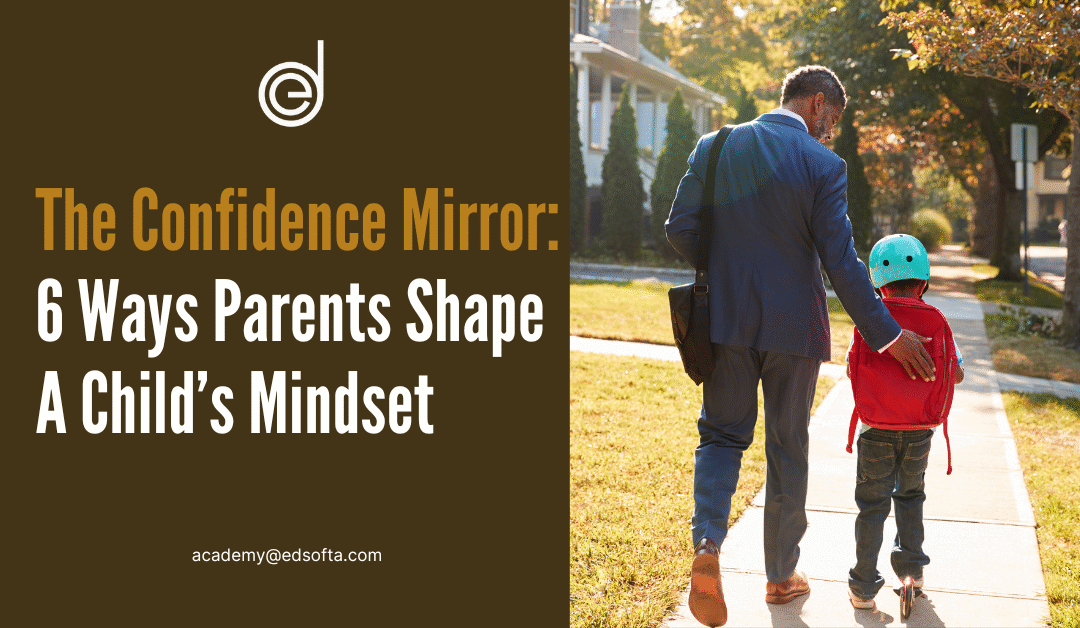Introduction: You Are Your Child’s First Teacher
As parents, we’ve all been there—watching our child struggle with a puzzle, get frustrated during homework, or burst into tears when something doesn’t go right. In those moments, we often wonder: How can I help my child become more confident and resilient?
It turns out the answer doesn’t lie in what we tell them—it’s in what we show them. When kids see how we, as parents, handle setbacks, they begin to shape their responses to challenges. They start to build a mindset, a voice that whispers either “I can figure this out” or “I’m not good enough.”
That’s why learning platforms like Scratch, where kids get to create, explore, and fail safely, are more than just fun—they’re foundational. In our Scratch coding classes, children aren’t just writing code—they’re learning to bounce back, think differently, and believe in themselves.
So, how can you, as a parent, play a key role in this journey? Let’s explore six ways to build confidence and problem-solving in your child, starting with how you respond to mistakes.
1. Kids Watch More Than They Listen to Their Parents

Let’s face it—kids are master observers. They may not always follow your words, but they’re always following your actions.
The next time you burn dinner, misplace your keys, or struggle with tech, pause. Instead of snapping or sighing, try saying out loud: “Oops! I made a mistake. Let’s see how I can fix this.”
This teaches your child that mistakes are normal and fixable. Whether they’re debugging code in Scratch or figuring out a maths problem, they’ll learn not to fear failure, but to face it.
2. Mistakes Are Opportunities, Not Roadblocks

As parents, when your child says, “I can’t do it!” after a failed attempt, resist the temptation to jump in and solve the problem for them. Here’s a better approach: “That’s okay! Mistakes are how we learn. What do you think you can try next?”
Coding on Scratch is filled with trial and error. A character might not move the right way, or a game might crash. But that’s the beauty of it—it encourages kids to think, try, tweak, and try again.
By normalising small failures, you’re turning obstacles into stepping stones.
Give Your Child the Best Learning Experience!
Register your kid now on EdSofta and watch them thrive in an interactive learning environment!
👉 Click Here to Register Your Kid Now!
3. Use Real-Life Examples to Teach Resilience

As parents, note that you don’t need a lecture to teach a lesson. Everyday situations work best.
If you’re assembling furniture and mess up a step, let your child see you adjust and try again. Say, “Hmm, that didn’t work the way I thought. Let me try another way.”
This real-time modelling teaches kids that persistence matters more than perfection. They’ll carry that same energy into their projects—whether it’s a Scratch animation that needs fixing or a class project gone wrong.
4. Celebrate Effort, Not Just Outcomes

It’s easy to cheer when your child wins a prize or aced a test. But what about the times they try hard and still fall short?
Praising effort reinforces a growth mindset. Try saying: “I’m proud of how hard you worked on that Scratch project, even though it didn’t go as planned. That kind of persistence is powerful.”
This helps children associate value with trying, not just winning. And the more they try, the more they grow in confidence.
5. Give Them Space to Problem-Solve

Sometimes, the best support is stepping back. When your child asks for help, resist the urge to jump in immediately. Instead, ask guiding questions:
- “What do you think is causing that?”
- “Have you tried another way?”
- “Want to test it out together?”
This technique works wonders during Scratch coding sessions. Instead of giving them the solution, you’re giving them the tools to find it themselves.
Give Your Child the Best Learning Experience!
Register your kid now on EdSofta and watch them thrive in an interactive learning environment!
👉 Click Here to Register Your Kid Now!
6. Create Safe Spaces for Mistakes

Children thrive in environments where it’s safe to mess up—and Scratch offers exactly that.
In our Scratch classes, we encourage kids to experiment, break things, and try again. One student once said, “I thought I ruined my game, but then I found another way to make it better!”
That kind of self-discovery builds deep confidence. Pair that with your calm, supportive attitude at home, and you’ve got a powerful formula for raising resilient, creative thinkers.
Final Thoughts: Let Confidence Be the Code
Your child is coding their mindset every day, and you’re the first teacher. Whether it’s through how you react to daily hiccups or the learning platforms you expose them to, your influence shapes how they respond to challenges.
By encouraging curiosity, celebrating mistakes, and introducing fun tools like Scratch, you’re helping your child say, “I can figure this out.”
Even when life gets tough.
Ready to Help Your Child Grow in Confidence Through Coding?
Give your child the chance to learn, explore, and build resilience—all while having fun.
Register them for our Scratch coding classes today.
Let’s help them code a mindset that lasts a lifetime.




